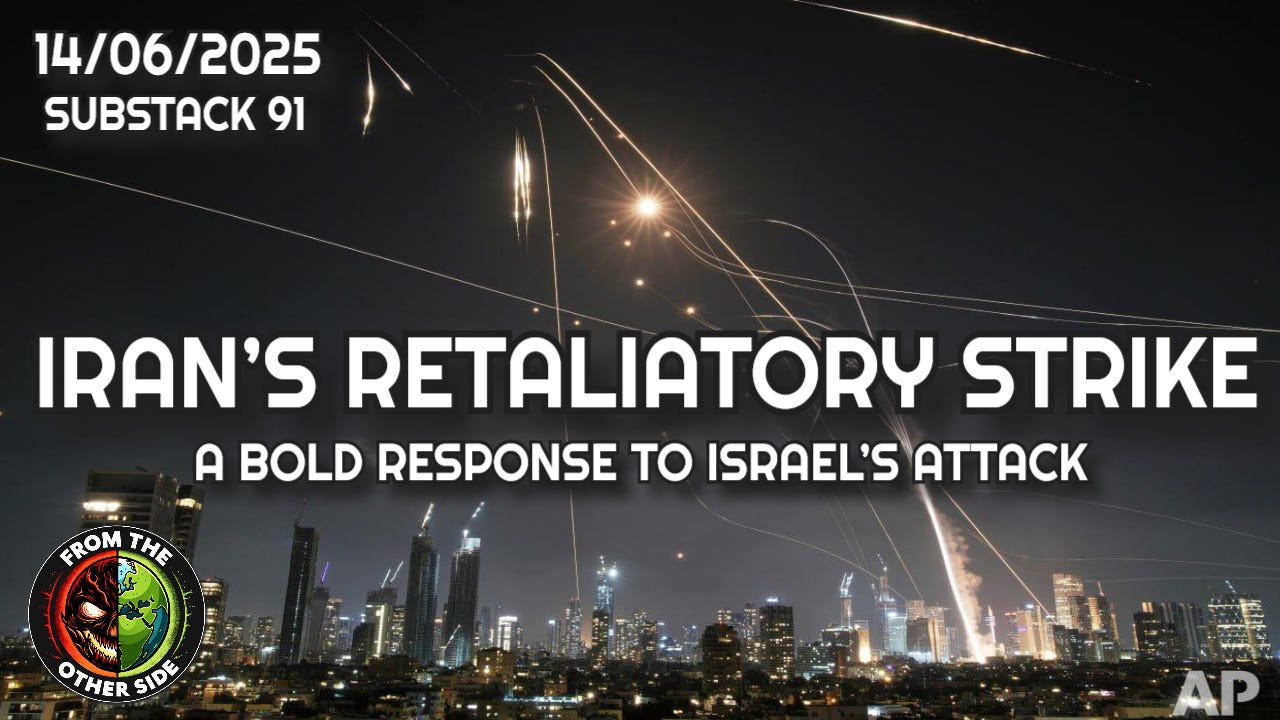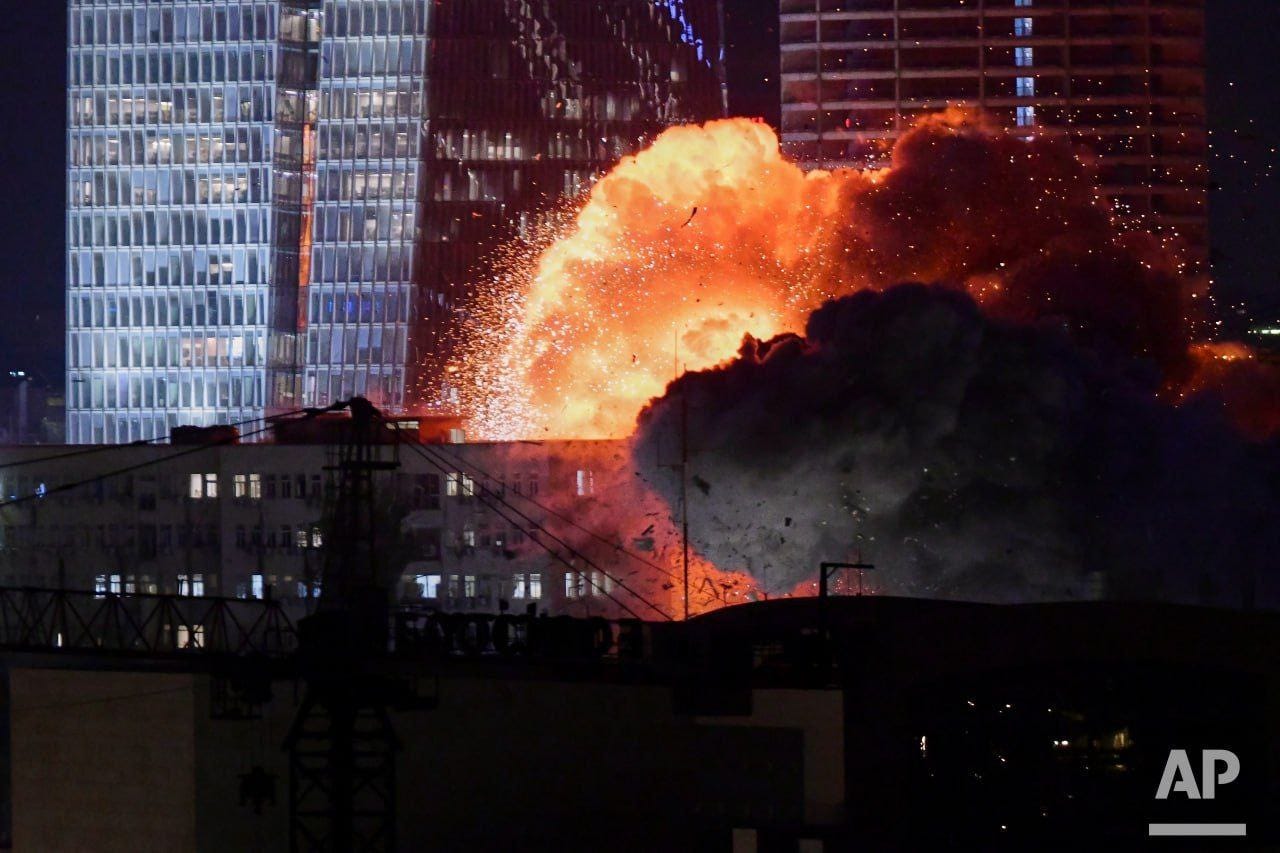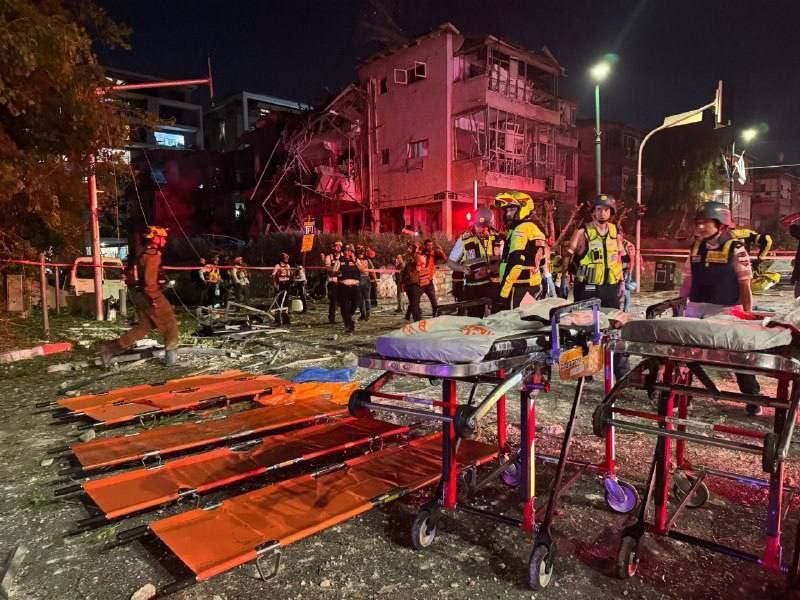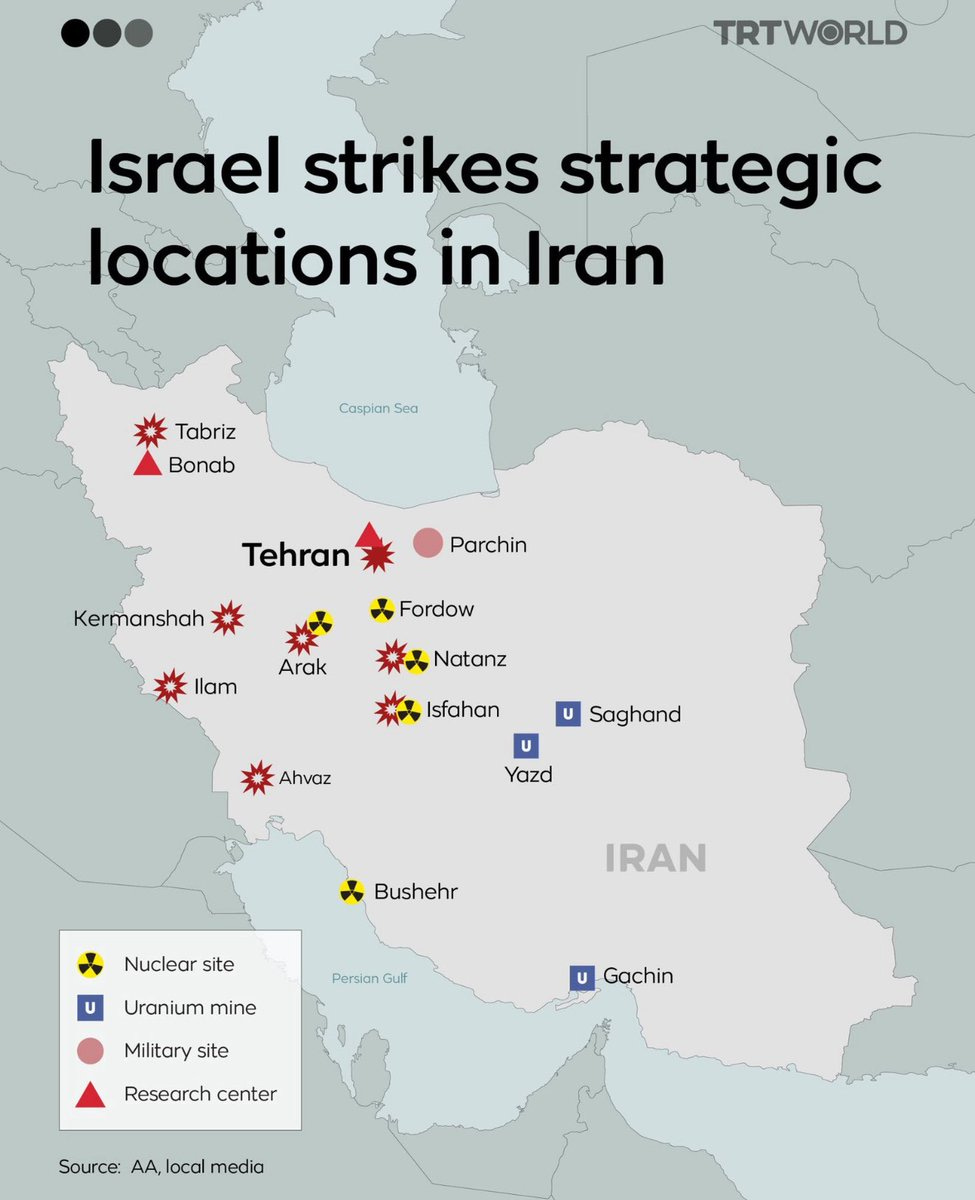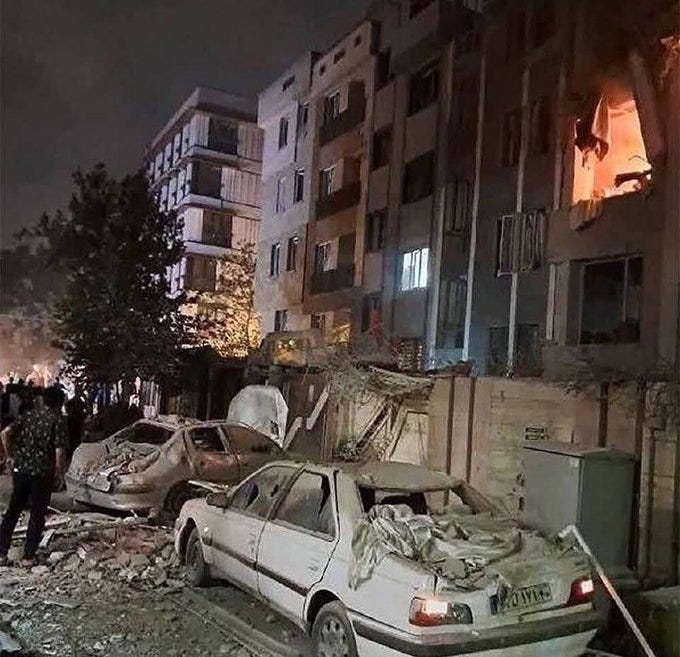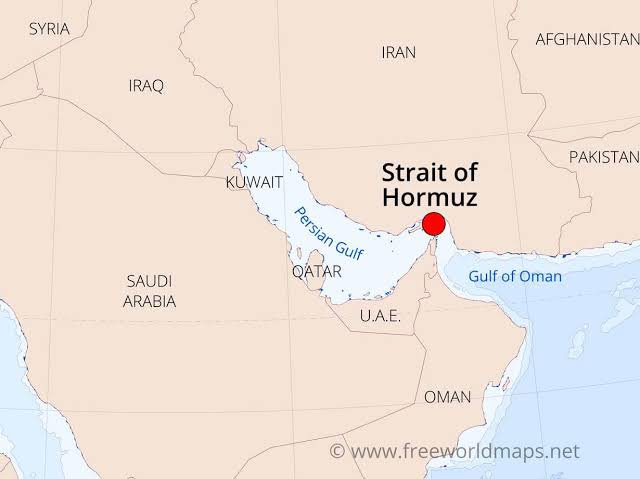IRAN’S RETALIATORY STRIKE: A BOLD RESPONSE TO ISRAEL’S ATTACK
On June 13, 2025, Iran launched an unprecedented retaliatory operation against Israel, unleashing four waves of ballistic missiles and drones that overwhelmed Israel’s air defenses. The attack, named “Operation Severe Punishment,” was a direct response to an unprovoked Israeli assault earlier that day, codenamed “Operation Rising Lion,” which targeted Iran’s nuclear facilities, military bases, and civilian infrastructure, killing senior commanders and scientists. Iran’s discovery of Mossad-orchestrated drone operations within its borders and its consideration of closing the Strait of Hormuz have escalated tensions to a critical point, threatening a broader regional conflict with global repercussions. This article details the four waves of Iranian strikes, their targets, results, and the far-reaching implications of these actions.
Iran’s Four-Wave Missile and Drone Barrage: Targets and Results
Iran’s operation, executed by the Islamic Revolutionary Guard Corps (IRGC), comprised four waves of attacks on June 13 and early June 14, 2025, involving over 400 ballistic missiles and 150 drones launched from Tabriz, Kashan, Shiraz, and Isfahan. Using advanced Fattah-1 and Kheibar Shekan missiles with maneuvering warheads, Iran overwhelmed Israel’s Iron Dome, David’s Sling, and Arrow 3 systems, allowing most missiles to penetrate defenses. Below is a detailed account of each wave, based on available reports.
First Wave (June 13, 8:00 PM Israel Time):
Targets: The initial wave targeted military installations, including Nevatim Airbase in the Negev, Tel Nof Airbase, and areas near Tel Aviv hosting Mossad headquarters and Unit 8200 intelligence facilities. The IRGC aimed to saturate Israel’s air defenses with a combination of 120 ballistic missiles and drones, targeting air control units and radar systems.
Results: Israel’s air defenses were overwhelmed, with most of the 120 missiles penetrating. A high-rise residential building in Tel Aviv was struck, killing one woman and injuring 34 civilians, while shrapnel damaged homes in Ramat Gan. Nevatim Airbase suffered significant damage, with a hangar and runway hit, disrupting operations. Al Jazeera reported multiple impacts in central Tel Aviv, causing explosions and fires. Nationwide sirens forced millions into shelters, and the IDF struggled to respond as interception systems faltered.
Second Wave (June 13, 10:25 PM Israel Time):
Targets: This wave hit Tel Aviv, Jerusalem, and the Sea of Galilee region, including Tiberias, with 100 missiles targeting military centers, airbases, and defense infrastructure linked to Israel’s attack on Iran. The IRGC claimed strikes on Israel’s air defense command centers to ensure subsequent waves faced less resistance.
Results: With defenses saturated, most missiles struck their targets. Explosions rocked Jerusalem and Tel Aviv, with residential areas hit. Ichilov Medical Center in Tel Aviv treated 15 people, including two in critical condition from shrapnel and seven with moderate injuries. Emergency services reported three medics injured by glass fragments. The Guardian noted widespread damage in Ramat Gan, with burned-out cars, collapsed buildings, and rescue teams overwhelmed at five impact sites in Gush Dan. Power outages affected parts of Tel Aviv.
Third Wave (June 13, 11:30 PM Israel Time):
Targets: The third wave targeted northern Israel (Haifa, Galilee), Beersheba, and areas near Dimona, home to the Shimon Peres Negev Nuclear Research Center, with 110 missiles. The IRGC claimed strikes on Ramon Airbase and air defense sites, asserting it downed two Israeli jets. The wave aimed to stretch Israel’s already strained defenses.
Results: Most missiles penetrated, causing extensive damage. Haifa reported multiple residential and commercial buildings hit, with fires spreading. Beersheba saw impacts on infrastructure, and unconfirmed reports suggested minor damage near Dimona, though the nuclear facility was unharmed. X posts described “apocalyptic” scenes in Haifa, with approximately 100 injuries nationwide, including 20 in serious condition. The IDF admitted its systems were “overloaded,” with interception rates dropping significantly.
Fourth Wave (June 14, 1:10 AM Israel Time):
Targets: The final wave targeted Tel Aviv, Jerusalem, Haifa, and Tiberias with 80 missiles, focusing on military command centers, airbases, and intelligence sites. The IRGC claimed strikes on facilities linked to Israel’s nuclear program and air operations, aiming to maximize disruption.
Results: With Israel’s defenses nearly collapsed, most missiles hit their targets. Tel Aviv saw multiple residential and commercial buildings struck, with fires and debris causing secondary damage. Jerusalem reported impacts near military sites, and Haifa faced further destruction. The Times of Israel noted at least 20 additional injuries, with medics overwhelmed. The IDF’s Home Front Command allowed civilians to leave shelters but urged proximity to protected areas, anticipating further attacks. Rescue operations continued amid widespread chaos.
Overall Impact: Iran’s four-wave attack killed one woman in Ramat Gan, injured approximately 150-200 people (30 in serious or critical condition), and caused extensive damage to residential, commercial, and military infrastructure. Unlike previous attacks, most missiles penetrated Israel’s defenses, which were overwhelmed by the volume and sophistication of Iran’s arsenal. The IDF reported limited assistance from U.S. Navy destroyers, which fired a dozen interceptors but could not counter the barrage’s scale. Iran claimed “devastating” results, with the IRGC asserting it crippled Israel’s air defense network, though independent assessments are ongoing. The attacks disrupted power, water, and communication systems in Tel Aviv and Haifa, with economic losses estimated in the billions.
Israel’s Unprovoked Aggression: The Catalyst
Israel’s unprovoked attack on June 13 targeted Iran’s nuclear sites at Natanz and Isfahan, military bases, and civilian areas, killing 78 people, including IRGC commander Hossein Salami, armed forces chief Mohammad Bagheri, and nuclear scientist Fereydoon Abbasi. Iran’s UN ambassador reported 320 injuries, mostly civilians, across 12 provinces. The International Atomic Energy Agency confirmed damage to Natanz’s enrichment plant, raising contamination concerns. Israel’s operation, involving 200 aircraft and Mossad commandos, exploited Iran’s weakened air defenses, degraded by October 2024 strikes. Prime Minister Benjamin Netanyahu claimed Iran could produce “15 nuclear bombs” imminently, a charge Iran denies, insisting its program is peaceful.
The attack’s timing, days before U.S.-Iran nuclear talks in Oman, suggests an intent to sabotage diplomacy. Russia, China, and Saudi Arabia condemned Israel’s “violation of sovereignty,” with X posts citing Israel’s history of provocations, including the April 2024 bombing of Iran’s Damascus consulate.
Mossad’s Covert Drone Operation Exposed
On June 14, Iran’s intelligence ministry seized vehicles, including a truck in Zanjan, a pickup in Kermanshah, and a Toyota Hilux, carrying drones linked to Mossad. These were part of a covert base near Tehran, used to strike Iranian missile launchers and air defenses during Israel’s attack. The operation involved smuggled precision weapons and commandos, enabling Israeli air superiority. Iran’s interception disrupted further attacks, exposing Israel’s infiltration and fueling calls for revenge. The discovery has strengthened Iran’s narrative of resisting espionage but risks internal purges, potentially destabilizing the regime.
Iran’s Consideration of Closing the Strait of Hormuz
Facing Israel’s aggression and Mossad’s plot, Iran is contemplating closing the Strait of Hormuz, through which 20% of global oil (20 million barrels daily) flows. IRGC Navy Chief Admiral Alireza Tangsiri affirmed Iran’s capability to close the strait using anti-ship missiles, drones, and speedboat swarms, though Iran relies on the strait for its oil exports. The scale of Israel’s attack and the drone seizure may force Iran’s hand, potentially through naval attacks, missile strikes, or mining to halt shipping from Iran, Saudi Arabia, Kuwait, Iraq, and the UAE.
Ramifications of Iran’s Actions and Potential Strait Closure
Iran’s Four-Wave Missile Strikes and Mossad Drone Seizure:
Regional Escalation: The strikes, with most missiles penetrating, humiliated Israel’s military, risking severe counterstrikes. The scale of destruction (one dead, 150-200 injured, billions in damage) emboldens Iran’s proxies, Hezbollah and the Houthis. Hezbollah has pledged restraint, but the Houthis threaten a wider war, potentially involving Lebanon, Yemen, or Syria.
Diplomatic Fallout: Iran’s cancellation of Oman nuclear talks and threat to expose Israel’s nuclear arsenal aim to shift global scrutiny. The UN Security Council’s emergency meeting and IAEA inspections may pressure Israel, but Iran’s aggressive response risks sanctions or isolation. The drone seizure bolsters Iran’s case against Israeli “terrorism” but could alienate neutral states if Iran escalates further.
Domestic Impact: The drone seizure and successful strikes have galvanized Iranian hardliners, with protests in Qom and Tehran demanding action. However, purges of suspected collaborators and economic strain from potential sanctions could erode public support.
Potential Closure of the Strait of Hormuz:
Global Oil Market Disruption: A closure would spike oil prices beyond $100 per barrel, following the 7% jump to $74.23 for Brent crude on June 13. China, Japan, India, and South Korea, reliant on 42% of Iran’s oil, would face shortages. Iraq, Kuwait, Bahrain, and Qatar, dependent on the strait, would face economic collapse.
Economic Blow to Iran: Iran’s 65% oil revenue dependency means a closure would slash income, forcing subsidy cuts and risking unrest among its 91 million citizens, many frustrated with the regime.
Military Response: The U.S., Saudi Arabia, and the UAE would deploy minesweepers, escorts, or airstrikes to reopen the strait. Iran’s actions could spark a broader war, with U.S. forces already engaged in missile interceptions. Iran’s drills with Russia and China signal a counter-alliance, but both may oppose a closure due to oil needs.
Global Economic Fallout: A prolonged closure would disrupt 33 billion cubic meters of natural gas annually, doubling the impact of other chokepoints. Tanker insurance premiums would soar, shipping could halt, and global inflation and supply chains would suffer. Egypt’s energy grid, reliant on Israeli gas, has activated emergency measures.
Limited Alternatives: Saudi Arabia and the UAE have partial pipeline bypasses, but Iraq and Kuwait lack options. Non-OPEC production and IEA reserves may mitigate losses but not for long.
Strategic and Regional Dynamics
Iran’s military, weakened by prior strikes and leadership losses, showed resilience, with its 2,000 ballistic missiles proving a potent threat. The U.S., denying involvement in Israel’s attack, assisted with interceptions but was overwhelmed, escalating entanglement fears. President Donald Trump’s push for talks and warnings of “brutal” consequences reflect U.S. efforts to avoid war, but a strait closure could force action.
Russia and China condemned Israel, with Putin offering mediation and China urging de-escalation. Iran’s naval drills with both signal alignment, but their opposition to a strait closure may restrain Iran. Jordan and Iraq, intercepting Iranian projectiles, fear entanglement.
Conclusion
Iran’s four-wave missile and drone assault, with most missiles penetrating Israel’s overwhelmed defenses, was a resounding response to Israel’s unprovoked attack and Mossad’s covert drone plot. Killing one, injuring 150-200, and causing billions in damage, the strikes exposed Israel’s vulnerabilities, reinforcing Iran’s deterrence. The seizure of Mossad drones humiliated Israel’s intelligence, but Iran’s consideration of closing the Strait of Hormuz risks catastrophic fallout: global oil shocks, military retaliation, and domestic unrest. With nuclear talks derailed and proxies mobilizing, the Middle East teeters on the edge of war. The UN and neutral powers must urgently broker de-escalation to prevent a conflict that could upend the global order. Time is running out.





